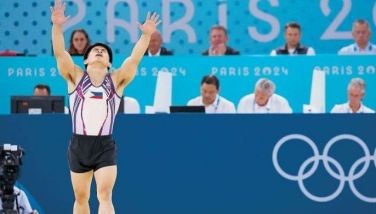BSP studies scheme to hike bank capital
October 8, 2005 | 12:00am
The monetary authorities are looking at the possibility of allowing banks to use another window to raise their capital.
Bangko Sentral ng Pilipinas (BSP) Deputy Governor Nestor Espenilla said banks have been asking the BSP to avail of the so-called Hybrid Tier I scheme.
"We are still studying it. At present, we do not have yet the Hybrid Tier I. It is another form of debt instrument with longer maturity and banks will not pay interest if they are not doing well or become insolvent," Espenilla said.
The rationale of allowing this particular recapitalization avenue, Espenilla said, is for banks to have more ways to strengthen their capital base through the issuance of debt instruments. "This will help banks to recapitalize or provides the banks capital raising opportunities. It is some kind of debt to be considered as Tier I," he said.
The BSP official said this could also help banks meet the higher capital requirements under new accounting standards and Basel II.
Basel II aims to align minimum capital requirements more closely to each bank’s actual risk of economic loss.
Espenilla explained that although this scheme is new in the Philippines, the Hybrid Tier I is already being used abroad as another form of instrument to raise capital. "It has no voting right and it is attractive to shareholders because it does not alter the voting structure. It is different because it has longer maturity of about 20 years and shares in the losses of the banks," he said.
According to Espenilla, they may come up with a circular on this particular capital-enhancement scheme by November this year.
If this is will be approved by the Monetary Board, he said the banks may be able to carry out their respective issuance of Hybrid Tier I by early next year.
Since this is a new instrument, Espenilla said he expects foreign institutions or foreign private pension funds to invest on this investment. "Initial interest may come from foreign fund managers. The initial issuance may come in a form of a foreign-denominated instruments. The banks may start in the foreign market because domestic market is still not familiar with this," he said.
He said the issuance of the new capital-raising window will be limited to a maximum of 15 percent of Tier I.
Core capital or Tier I capital consists of common stock, perpetual and non-cumulative preferred stock, dividends distributable, surplus, surplus reserves, undivided profits and minority interest in the equity of subsidiary financial allied undertakings which are less than wholly owned.
In November 2002, the Monetary Board approved higher limits on Lower and Total Tier 2 capital that may form part of the qualifying capital of banks. The limits have been raised to 50 percent and 100 percent of Tier 1 capital for Lower and Total Tier 2 capital, respectively, compared to 25 percent and 50 percent, respectively, as prescribed in Circular No. 280 in March 29, 2001.
Bangko Sentral ng Pilipinas (BSP) Deputy Governor Nestor Espenilla said banks have been asking the BSP to avail of the so-called Hybrid Tier I scheme.
"We are still studying it. At present, we do not have yet the Hybrid Tier I. It is another form of debt instrument with longer maturity and banks will not pay interest if they are not doing well or become insolvent," Espenilla said.
The rationale of allowing this particular recapitalization avenue, Espenilla said, is for banks to have more ways to strengthen their capital base through the issuance of debt instruments. "This will help banks to recapitalize or provides the banks capital raising opportunities. It is some kind of debt to be considered as Tier I," he said.
The BSP official said this could also help banks meet the higher capital requirements under new accounting standards and Basel II.
Basel II aims to align minimum capital requirements more closely to each bank’s actual risk of economic loss.
Espenilla explained that although this scheme is new in the Philippines, the Hybrid Tier I is already being used abroad as another form of instrument to raise capital. "It has no voting right and it is attractive to shareholders because it does not alter the voting structure. It is different because it has longer maturity of about 20 years and shares in the losses of the banks," he said.
According to Espenilla, they may come up with a circular on this particular capital-enhancement scheme by November this year.
If this is will be approved by the Monetary Board, he said the banks may be able to carry out their respective issuance of Hybrid Tier I by early next year.
Since this is a new instrument, Espenilla said he expects foreign institutions or foreign private pension funds to invest on this investment. "Initial interest may come from foreign fund managers. The initial issuance may come in a form of a foreign-denominated instruments. The banks may start in the foreign market because domestic market is still not familiar with this," he said.
He said the issuance of the new capital-raising window will be limited to a maximum of 15 percent of Tier I.
Core capital or Tier I capital consists of common stock, perpetual and non-cumulative preferred stock, dividends distributable, surplus, surplus reserves, undivided profits and minority interest in the equity of subsidiary financial allied undertakings which are less than wholly owned.
In November 2002, the Monetary Board approved higher limits on Lower and Total Tier 2 capital that may form part of the qualifying capital of banks. The limits have been raised to 50 percent and 100 percent of Tier 1 capital for Lower and Total Tier 2 capital, respectively, compared to 25 percent and 50 percent, respectively, as prescribed in Circular No. 280 in March 29, 2001.
BrandSpace Articles
<
>
- Latest
- Trending
Trending
Latest





























